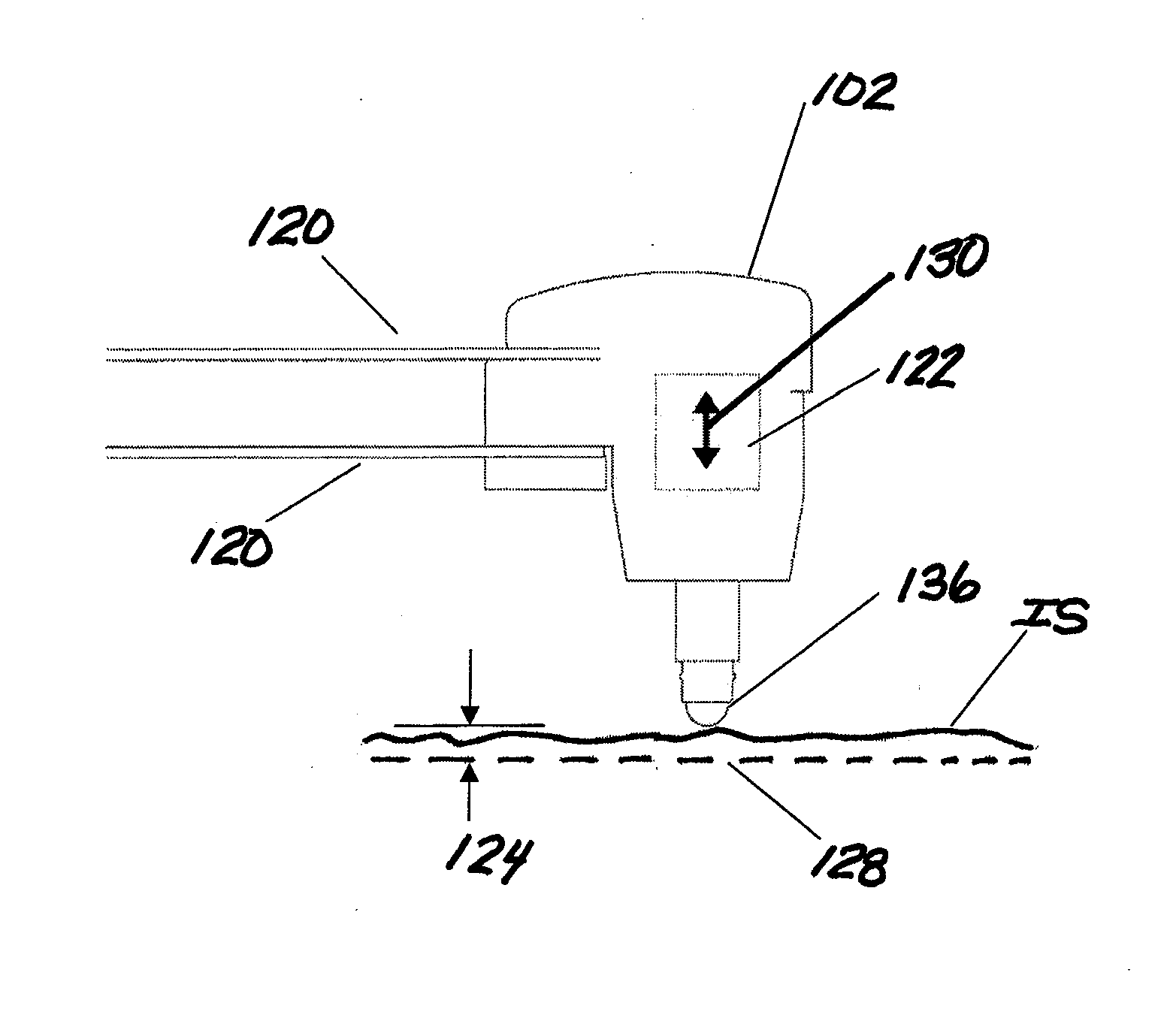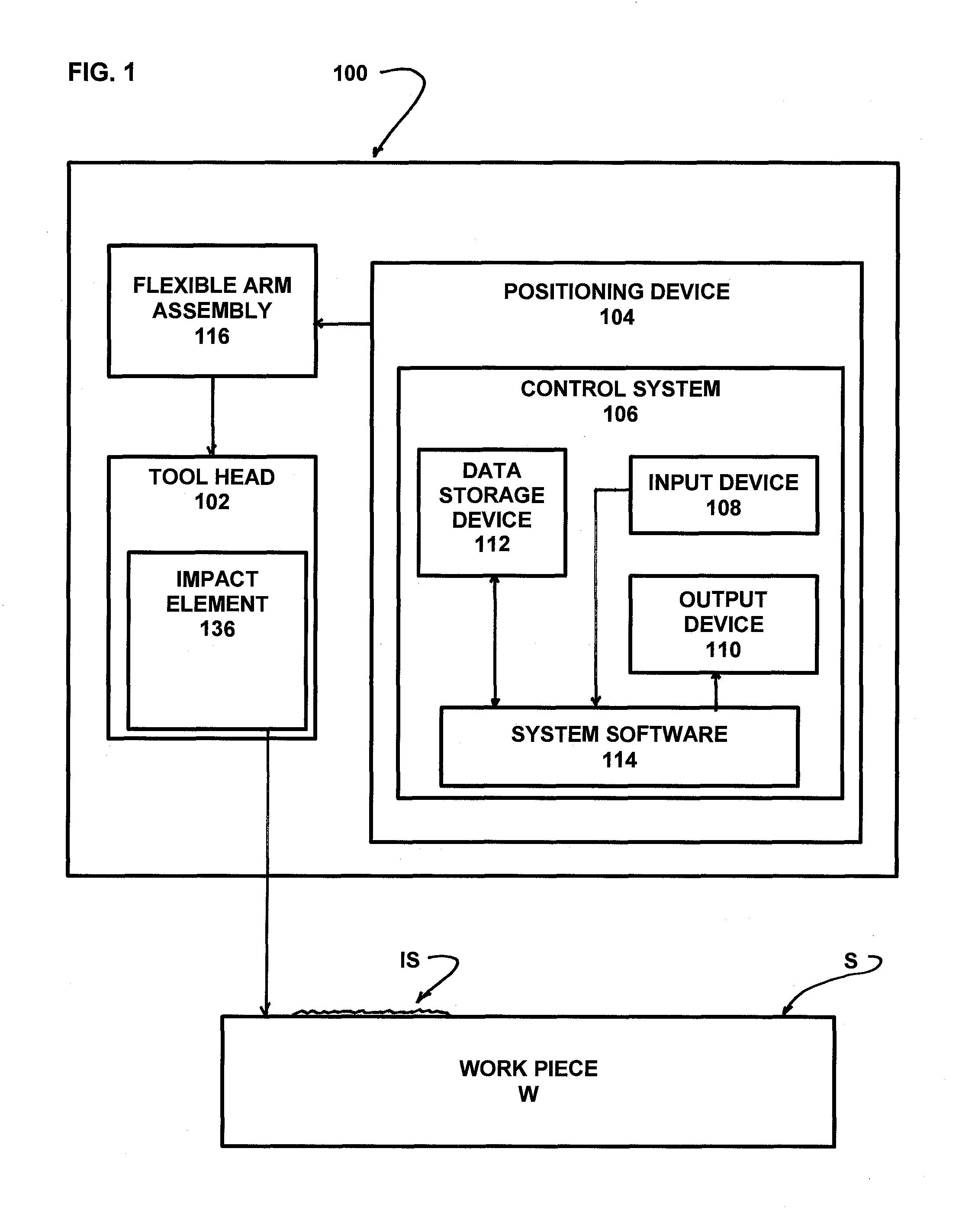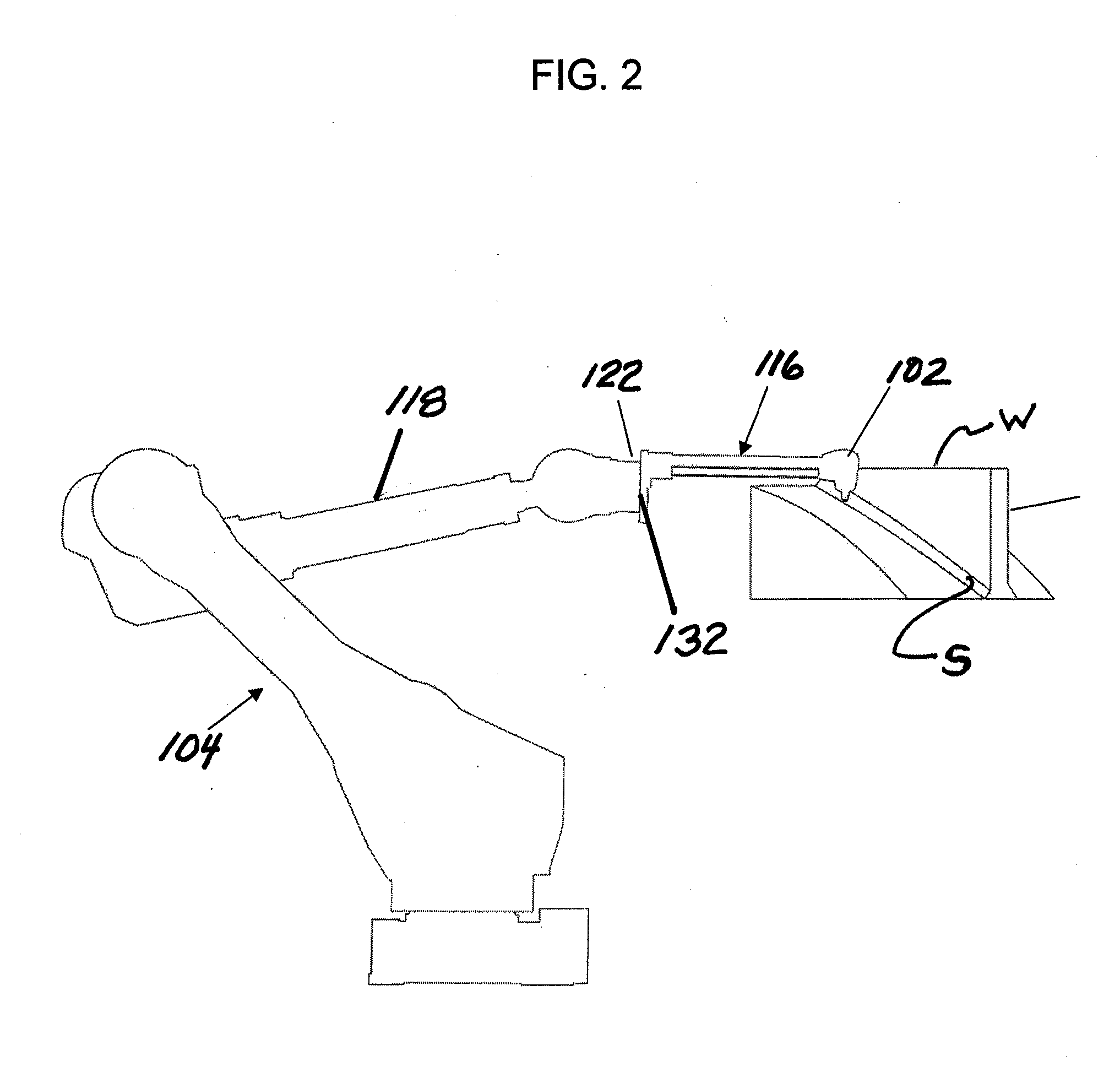Method and compression apparatus for introducing residual compression into a component having a regular or an irregular shaped surface
a compression apparatus and component technology, applied in the direction of grinding/polishing apparatus, grinding machines, manufacturing tools, etc., can solve the problems of failure of metallic machines and various structural components, failures generally initiated from the surface of the component, and uncontrolled manual process
- Summary
- Abstract
- Description
- Claims
- Application Information
AI Technical Summary
Benefits of technology
Problems solved by technology
Method used
Image
Examples
Embodiment Construction
[0073]The present invention relates to inducing compression and cold work along and in the surface of component workpieces. In describing the preferred embodiments of the invention illustrated in the drawings, specific terminology will be resorted to for the sake of clarity. However, the invention is not intended to be limited to the specific terms so selected, and it is to be understood that each specific term includes all technical equivalents that operate in a similar manner to accomplish a similar purpose.
[0074]The apparatus and method of the invention operate to provide controlled plastic strain by compression to create cold work and compressive residual stress along and in the surface of a workpiece having an irregular surface topography, such as welds, castings or re-worked components, for which automated processing, such as be use of CNC controlled machines or robots was not previously practical or reliable. In a preferred embodiment of the invention, the compression apparat...
PUM
| Property | Measurement | Unit |
|---|---|---|
| Angle | aaaaa | aaaaa |
| Force | aaaaa | aaaaa |
| Structure | aaaaa | aaaaa |
Abstract
Description
Claims
Application Information
 Login to View More
Login to View More - R&D
- Intellectual Property
- Life Sciences
- Materials
- Tech Scout
- Unparalleled Data Quality
- Higher Quality Content
- 60% Fewer Hallucinations
Browse by: Latest US Patents, China's latest patents, Technical Efficacy Thesaurus, Application Domain, Technology Topic, Popular Technical Reports.
© 2025 PatSnap. All rights reserved.Legal|Privacy policy|Modern Slavery Act Transparency Statement|Sitemap|About US| Contact US: help@patsnap.com



